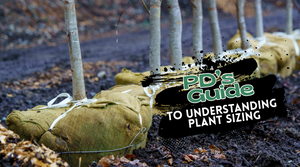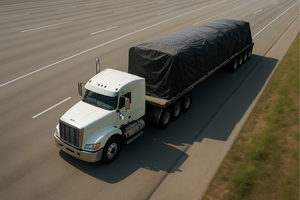Chestnut Oak
Chestnut Oak (Quercus prinus)
Chestnut Oak is a rugged, long-lived shade tree that brings a steady, classic look to large landscapes. It is a great fit when you want an oak that can handle leaner, drier sites while still developing a strong, broad canopy over time. The overall effect is durable and understated, with year after year consistency once established. For properties that need a dependable backbone tree with real longevity, this one earns its place.
Distinctive Features
This North American native oak is known for its dark, deeply ridged bark and leathery leaves with coarse, chestnut-like edges. Summer foliage is rich green, shifting to warm yellow to brown tones in fall, often lingering into late season. It develops a sturdy trunk and a rounded crown, creating an architectural silhouette that looks more impressive with age. Acorns are an added bonus for wildlife and help reinforce its natural, woodland character.
Growing Conditions
- Sun: Full sun is ideal, though it can tolerate light shade, especially when young.
- Soil: Prefers well-drained soils and performs well on rocky, sandy, or upland sites once established.
- Water: Water consistently during establishment, then provide deep watering during prolonged dry periods.
- USDA Zones: 4 to 8.
- Site: Allow ample space for canopy and root development, especially away from pavement and foundations.
Ideal Uses
- Focal Point: Plant as a single specimen where its bold bark texture and mature canopy can define an open area.
- Shade Tree: Use to create long-term shade over lawns, gathering areas, or larger garden beds.
- Naturalized Landscapes: Add to woodland edges and native plantings for a stable, site-appropriate canopy tree.
- Property Structure: Place along boundaries or long views to establish permanence and a sense of scale.
Low Maintenance Care
- Watering: Deep water weekly in the first growing season, then gradually reduce as roots establish.
- Mulching: Apply mulch to conserve moisture and protect roots, keeping it a few inches away from the trunk.
- Pruning: Prune in dormancy to remove damaged branches and encourage a strong, well-spaced framework.
- Fertilizing: Usually not needed, but a soil test can guide any nutrient or pH adjustments.
Why Choose Chestnut Oak?
- Tough Site Performer: Handles upland and drier conditions well once established, especially compared to many large shade trees.
- Textured Bark: Deeply furrowed bark adds year-round character and a mature look early on.
- Legacy Value: Long lifespan and strong structure make it a true generational tree.
- Wildlife Support: Acorns provide a natural food source for many birds and mammals.
Chestnut Oak is the kind of tree that quietly improves a landscape every year, adding shade, structure, and an unmistakable sense of permanence. Give it sun, drainage, and room to grow, and it will become a reliable canopy tree that looks better with time. It is a smart choice for anyone building a landscape meant to last.

OUR SIZING
Not sure what 2 inch B&B or 30 Gallon Clump really means? This guide breaks down all our plant size terms so you know exactly what to expect, whether you're ordering online or picking up at our nursery. From caliper measurements to container volumes, we've decoded our system to help you shop with confidence.

Plant Detectives Shipping Guide
Nationwide plant shipping made easy. Learn how we ship trees, shrubs, annuals and perennials. No order too big or too small. Fast, careful, and contractor-friendly.

